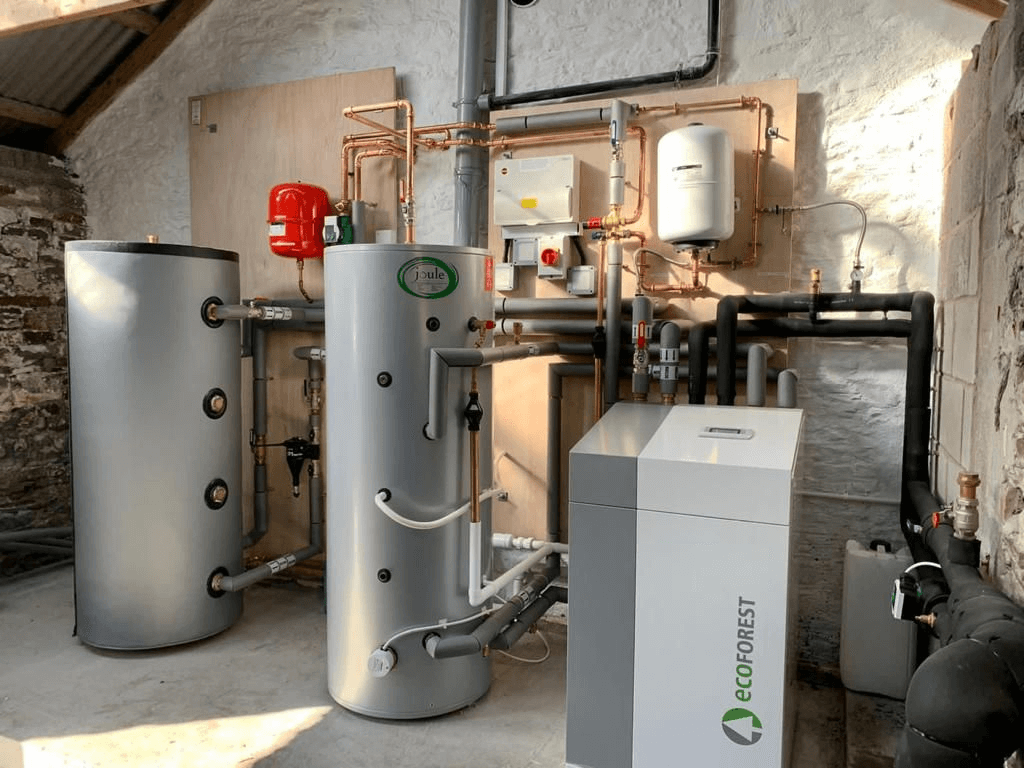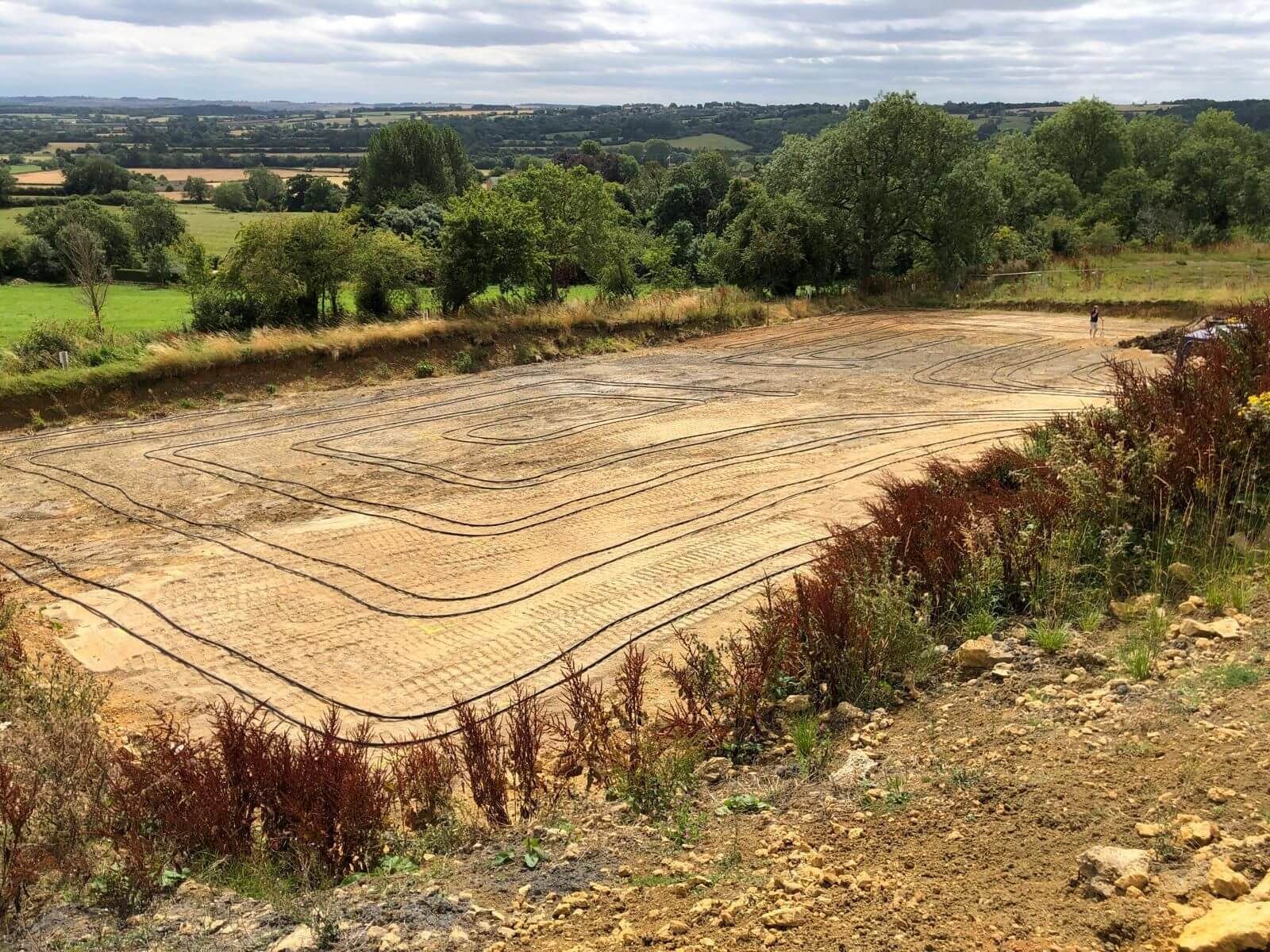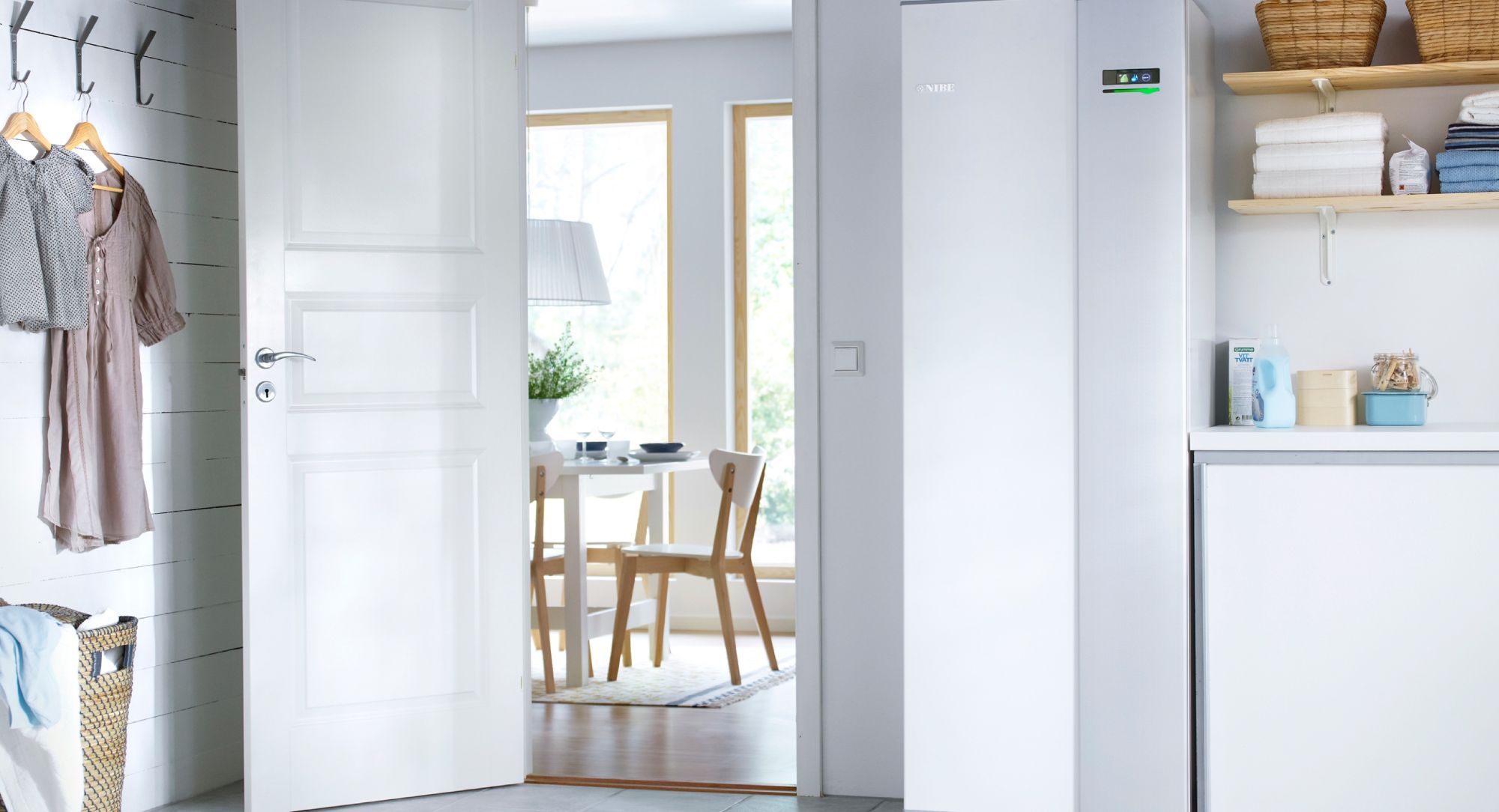A ground source heat pump uses the constant latent geothermal heat in ground water to produce thermal energy ideal for heating and hot water. Ground source heat pumps use electricity and so for every 1kW of electricity used to operate the heat pumps, 3kW to 5kW of heat energy is produced and available for heating purposes.

How it works
Ground source heat pumps use pipes which are buried in the garden to extract heat from the ground. This heat can then be used to heat radiators, underfloor or warm air heating systems and hot water in your home.
A ground source heat pump circulates a mixture of water and antifreeze around a loop of pipe – called a ground loop – which is buried in your garden. Heat from the ground is absorbed into the fluid and then passes through a heat exchanger into the heat pump. The ground stays at a fairly constant temperature under the surface, so the heat pump can be used throughout the year – even in the middle of winter.

Why change to a ground source heat pump?
Reduce your carbon footprint – a ground source heat pump will significantly reduce the amount of energy used to heat your property.
Increased comfort – ground source heat pumps provide increased comfort levels with a steady temperature all year round, rather than on and off for short periods as with a gas or oil boiler, which can be particularly favourable for those working from home. This can also help reduce damp in older buildings due to the constant low level heat maintaining an even, comfortable temperature throughout the property.
There is an upfront government grant of £7,500 towards the cost of replacing your gas, oil or direct electric heating system with a heat pump. Read more about the Boiler Upgrade Scheme.
Reduce running costs, especially with air source heat pump specific energy tariffs, such as the Octopus Cosy tariff.
Convenience – in off-grid properties, you will no longer need fuel deliveries, no unsightly oil or LPG tanks on your property, and no more boiler fume smells
Additional requirements for ground source installations
Whilst in the past we installed a lot more ground source heat pumps, changes to government grants and the improvements in efficiency mean that air source heat pumps now make up around 95% of our installations. There are a number of additional factors to consider when installing a ground source heat pump.
Ground collector – you will need to have a fairly large area of land available for the installation of a ground collector, less if you opt for a vertical borehole system.
Additional capital cost – Due to the requirement for a ground collector the cost of a ground source heat pump will be more expensive than an air source heat pump.
Additional disruption – The works involved to install a ground source heat pump are a lot more extensive than installing an air source heat pump and include quite a lot of ground works.
Despite the additional challenges, ground source heat pumps remain an extremely reliable and efficient option.
Is my home heat pump ready?
A heat pump will heat any home efficiently so long as it is designed and installed correctly. We have countless examples of century’s old properties with limited to no insulation that have been successfully transferred from fossil fuels to heat pumps (we live in some of these properties ourselves!). The key to installing heat pumps of any kind is that the heating emitter circuit is optimised to work with heat pumps and run at lower flow temperatures (between 35-55°C) than used with a conventional fossil fuel boiler.
Heat pumps run at lower temperatures – radiators and occasionally radiator pipework might need to be changed to be suitable, we can advise on any changes that need to be made.
Internal space requirements - you will need to allocate some space within your house for the hot water cylinder, buffer tank/volumiser, pipework and controls. We can advise on the space required.
Any heating system will use less energy the better insulated the home is and we would always encourage improvements in insulation levels to reduce running costs.
How ground source heat pumps work
Ground source heat pumps use pipes which are buried in the garden to extract heat from the ground. This heat can then be used to heat radiators, underfloor or warm air heating systems and hot water in your home.
A ground source heat pump circulates a mixture of water and antifreeze around a loop of pipe – called a ground loop – which is buried in your garden. Heat from the ground is absorbed into the fluid and then passes through a heat exchanger into the heat pump. The ground stays at a fairly constant temperature under the surface, so the heat pump can be used throughout the year – even in the middle of winter.
Will a heat pump lower my bills?
A well designed & installed system should always lower your energy bills. As a heat pump runs on electric, you will be able disconnect your gas supply which means you can remove your standing charge. There are now heat pump tariffs available (such as the OVO heat pump tariff) which mean you can pay a lower rate than your standard tariff for any electricity used by your heat pump, further reducing running costs.
